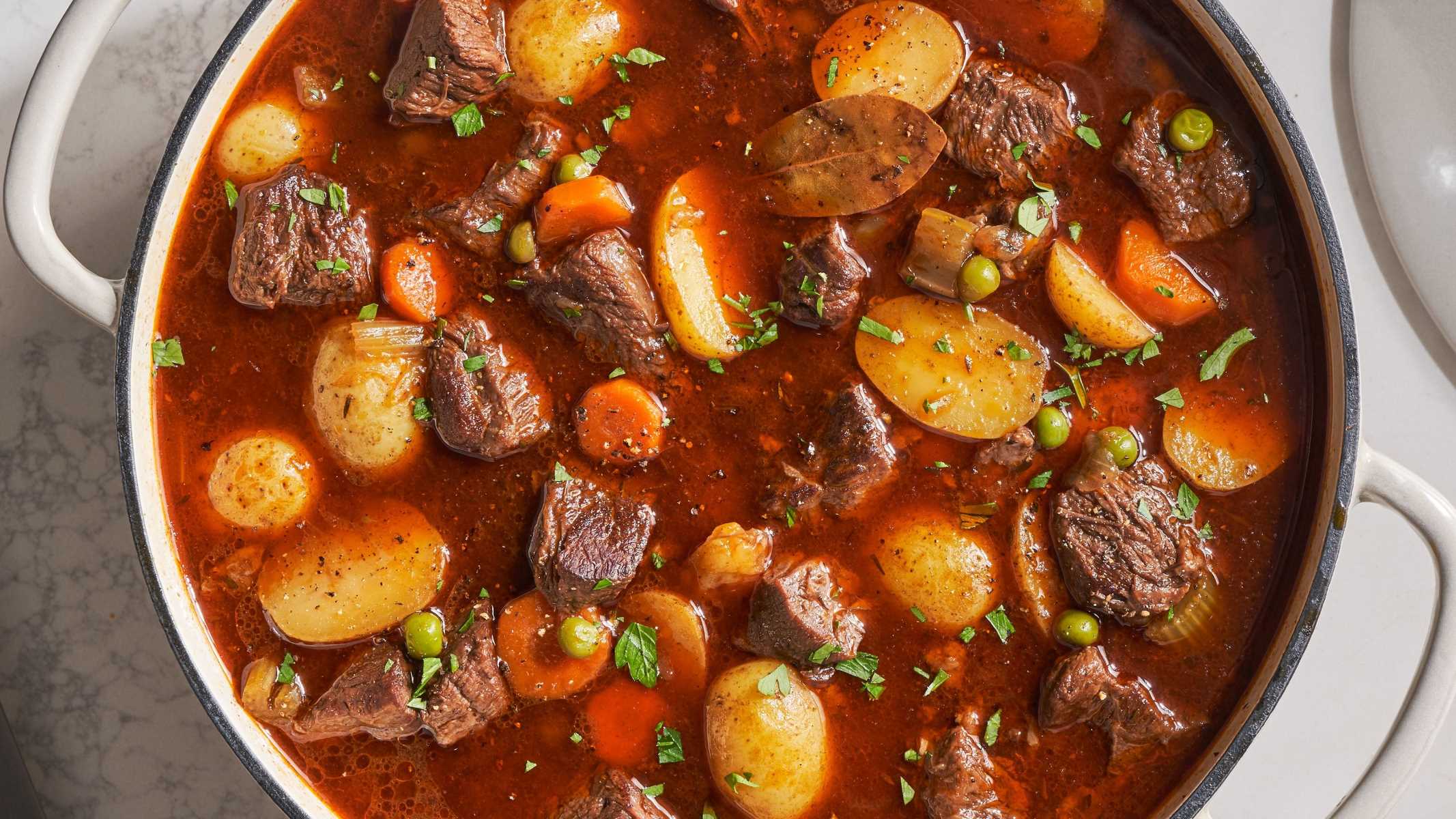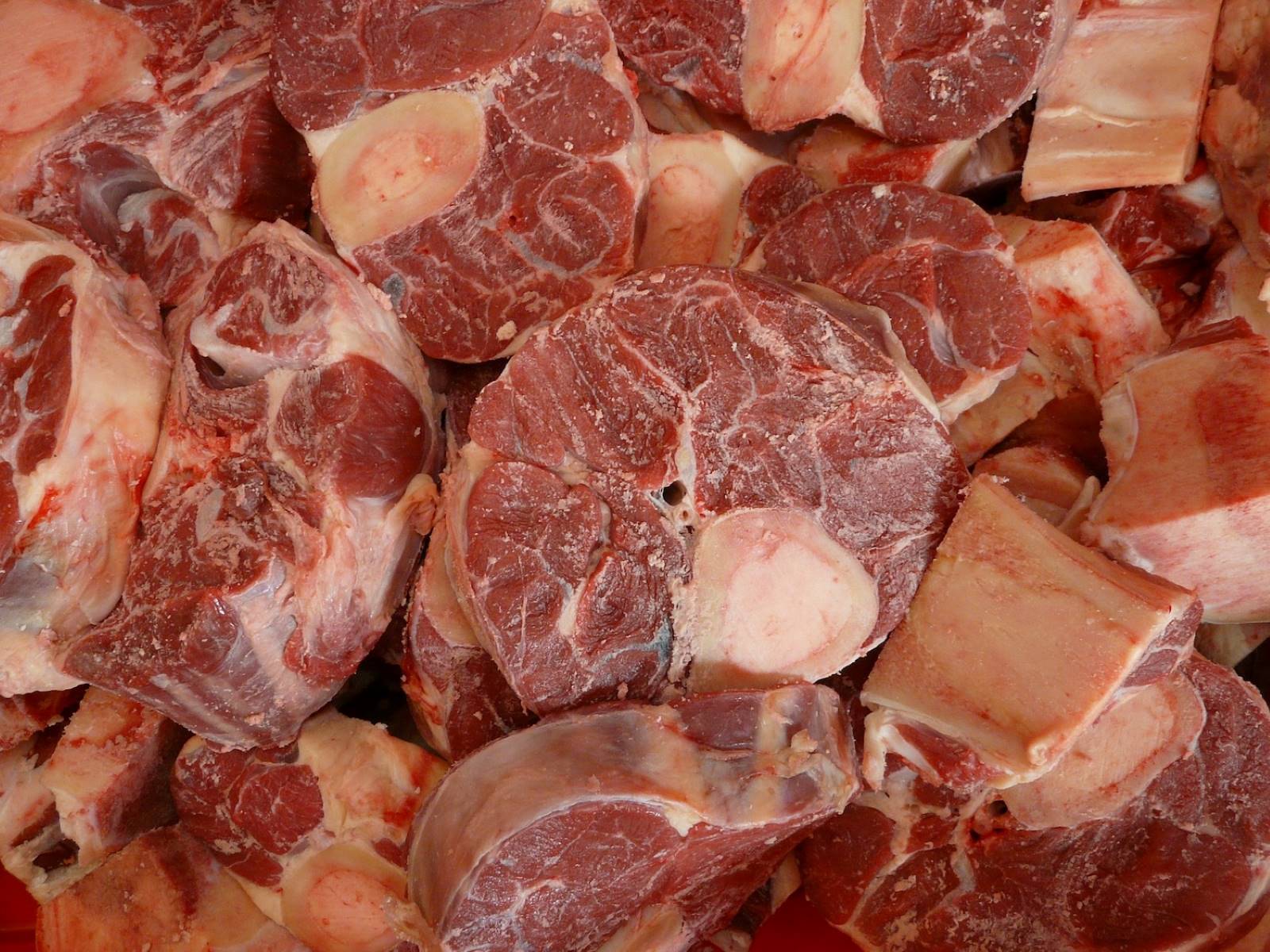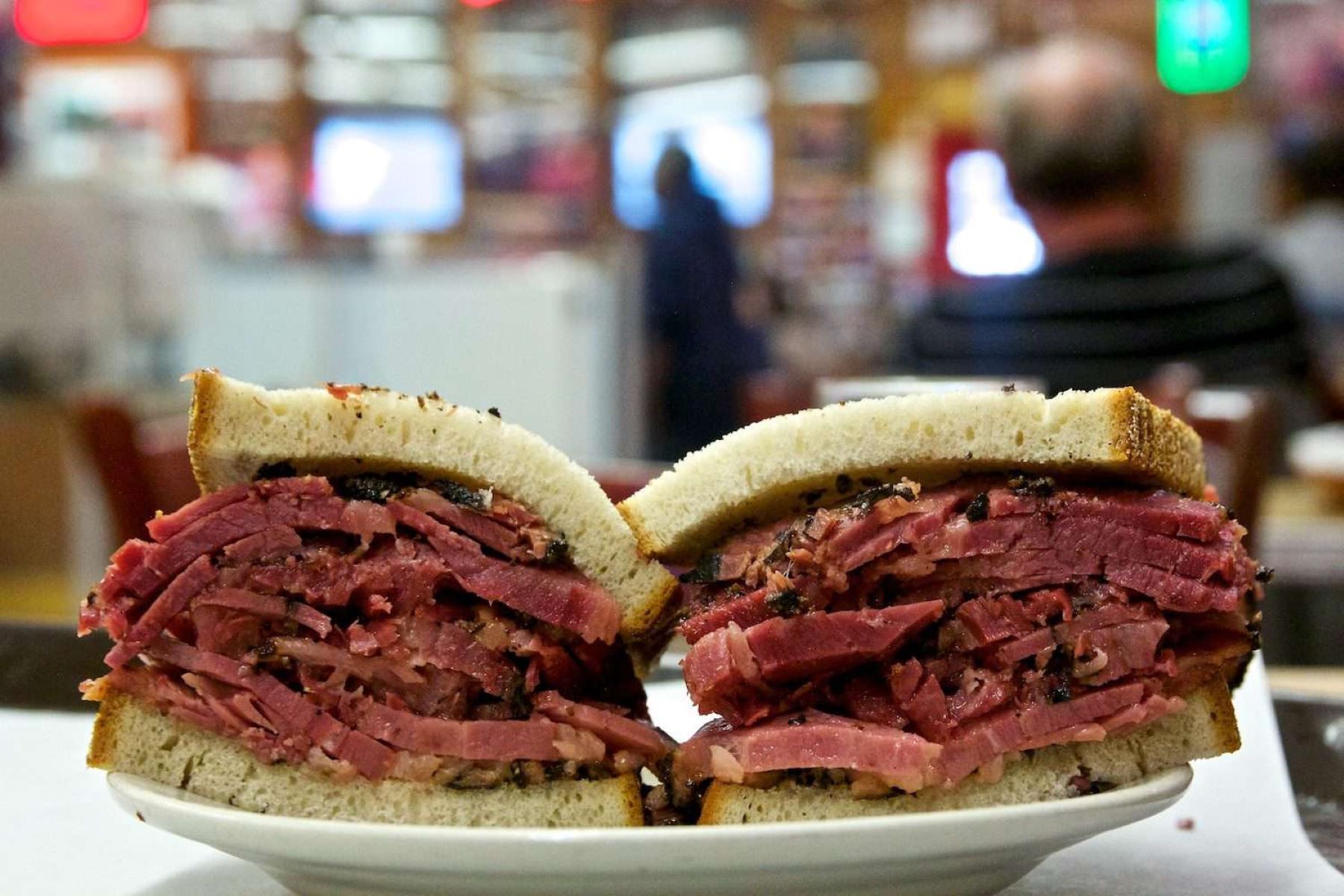Home>Food and Cooking>How To Make Stew Meat Tender


Food and Cooking
How To Make Stew Meat Tender
Published: February 28, 2024
Learn how to make stew meat tender with these simple cooking techniques. Discover the best tips for preparing delicious and tender stew meat at home. Perfect for food and cooking enthusiasts!
(Many of the links in this article redirect to a specific reviewed product. Your purchase of these products through affiliate links helps to generate commission for Regretless.com, at no extra cost. Learn more)
Table of Contents
Introduction
Tender, succulent stew meat is a delight to savor, offering a rich and satisfying dining experience. Whether you're preparing a classic beef stew, a hearty lamb stew, or a flavorful chicken stew, achieving tender meat is essential for a truly delectable dish. The process of making stew meat tender involves various techniques and considerations, each contributing to the overall texture and taste of the final dish.
In this comprehensive guide, we will explore the art of transforming tough cuts of meat into melt-in-your-mouth perfection. From selecting the right cut of meat to employing marination, slow cooking, and other methods, we will delve into the secrets of achieving tender stew meat. Whether you're a seasoned home cook or a culinary enthusiast looking to elevate your stew-making skills, this guide will equip you with the knowledge and techniques to create mouthwatering, tender stew meat that will leave your family and guests craving for more.
Join us on this culinary journey as we uncover the secrets to mastering the art of tenderizing stew meat. Let's embark on this flavorful adventure and unlock the potential of humble cuts of meat, transforming them into a symphony of tenderness and flavor that will elevate your stew to new heights.
Read more: How To Make Gray
Choosing the Right Cut of Meat
Selecting the right cut of meat is a crucial first step in the journey to achieving tender and flavorful stew. Tougher cuts of meat, such as chuck, round, or shoulder, are ideal for stewing due to their higher collagen content. Collagen, a connective tissue, breaks down during the cooking process, transforming into gelatin and imparting a luscious, silky texture to the stew. When choosing meat for stewing, look for cuts that are well-marbled with fat and have a good amount of connective tissue, as these characteristics contribute to the richness and succulence of the final dish.
Here are some popular cuts of meat that are well-suited for stewing:
-
Beef Chuck: This cut, taken from the shoulder region, is marbled with fat and contains a generous amount of collagen. When slow-cooked, it becomes tender and imparts a rich, beefy flavor to the stew.
-
Beef Round: The round, derived from the rear leg of the cow, is lean and contains a moderate amount of collagen. While it is less fatty than chuck, it can yield tender results when cooked low and slow.
-
Lamb Shoulder: Lamb shoulder is renowned for its exceptional flavor and succulence. It contains ample connective tissue, making it well-suited for stewing. The slow cooking process allows the meat to become tender while infusing the stew with its distinct, savory taste.
-
Chicken Thighs: When it comes to poultry, chicken thighs are an excellent choice for stewing. They are more flavorful and tender compared to chicken breasts, thanks to their higher fat content and richer flavor profile.
When purchasing stew meat, look for cuts that are well-marbled, as the intramuscular fat contributes to the tenderness and flavor of the stew. Additionally, consider the size of the meat pieces, aiming for uniformity to ensure even cooking. By carefully selecting the right cut of meat, you set the stage for a delectable stew that will delight the senses and leave a lasting impression on all who partake in its savory goodness.
Marinating the Meat
Marinating the meat is a time-honored technique that not only infuses the stew meat with flavor but also contributes to its tenderness. A well-crafted marinade can work wonders in transforming tough cuts of meat into succulent, melt-in-your-mouth perfection. The process of marination involves soaking the meat in a flavorful mixture, allowing it to absorb the seasonings and tenderizing agents, thereby enhancing its taste and texture.
When preparing a marinade for stew meat, it's essential to include ingredients that not only add depth of flavor but also contain natural tenderizing properties. Acidic components such as vinegar, citrus juice, or yogurt can help break down the tough muscle fibers, resulting in a more tender end product. Additionally, the inclusion of aromatic herbs, spices, and oils can impart a rich and complex flavor profile to the meat, elevating the overall taste of the stew.
To marinate stew meat effectively, follow these steps:
-
Prepare the Marinade: In a bowl, combine your choice of acidic component, such as red wine vinegar, lemon juice, or plain yogurt, with an assortment of herbs and spices. Common additions include garlic, thyme, rosemary, paprika, and olive oil. The acidic element will help tenderize the meat, while the herbs and spices will infuse it with robust flavors.
-
Coat the Meat: Place the stew meat in a resealable plastic bag or a shallow dish, ensuring that it is evenly spread out. Pour the marinade over the meat, ensuring that each piece is thoroughly coated. Seal the bag or cover the dish with plastic wrap, then refrigerate the meat for at least 2-4 hours, or ideally overnight. This extended marination period allows the flavors to penetrate the meat and work their magic, resulting in enhanced tenderness and taste.
-
Rotate and Massage: If marinating for an extended period, rotate the bag or stir the meat occasionally to ensure that all pieces are evenly marinated. Massaging the marinade into the meat can further enhance its absorption, ensuring that every bite is infused with the delectable flavors.
By marinating the stew meat with a well-crafted blend of acidic components, herbs, and spices, you can elevate its tenderness and flavor, setting the stage for a truly exceptional stew. This simple yet impactful technique can turn an ordinary stew into a culinary masterpiece, captivating the palates of all who partake in its savory delights.
Using a Slow Cooker
Harnessing the power of a slow cooker is a game-changing technique when it comes to achieving tender and flavorful stew meat. Also known as a crock-pot, a slow cooker is designed to cook food at a low temperature over an extended period, allowing the meat to tenderize gradually while developing rich, complex flavors. This gentle, prolonged cooking process is particularly effective for tougher cuts of meat, as it gives them ample time to break down and become irresistibly tender.
When using a slow cooker to prepare stew meat, it's essential to follow a few key steps to ensure optimal results. Here's a comprehensive guide to harnessing the full potential of this versatile kitchen appliance:
Preparing the Ingredients
Before embarking on the slow cooking journey, it's important to prepare the stew meat and accompanying ingredients. Begin by searing the meat in a hot skillet to lock in its juices and enhance its flavor. This initial step adds a depth of savory richness to the meat, setting the stage for a truly delectable stew. Additionally, consider incorporating an array of aromatic vegetables, such as onions, carrots, and celery, to infuse the stew with layers of savory goodness.
Read more: How To Make A Ring
Layering the Ingredients
Once the meat and vegetables are prepared, it's time to layer them in the slow cooker. Begin by placing the seared stew meat at the bottom of the slow cooker, creating a solid foundation for the dish. Next, add the aromatic vegetables, distributing them evenly to ensure a balanced flavor profile. This layering technique allows the ingredients to meld together harmoniously, resulting in a cohesive and well-rounded stew.
Adding the Liquid
After layering the meat and vegetables, it's crucial to add the liquid component to the slow cooker. Whether it's beef broth, chicken stock, red wine, or a combination of flavorful liquids, the addition of ample liquid is essential for creating a luscious stew. The liquid not only provides moisture for the slow cooking process but also serves as a medium for infusing the stew with rich, savory flavors.
Setting the Time and Temperature
Once the ingredients are layered and the liquid is added, it's time to set the slow cooker to the appropriate time and temperature. For stew meat, a low setting is ideal, as it allows the meat to tenderize slowly while absorbing the flavors of the surrounding ingredients. Depending on the recipe and the specific cut of meat, the cooking time may vary, but a typical range falls between 6 to 8 hours on low heat.
Allowing the Magic to Happen
With the slow cooker set and the lid in place, it's time to let the magic unfold. As the stew meat simmers gently over the course of several hours, the collagen in the meat breaks down, transforming into gelatin and infusing the stew with a luxurious, silky texture. The flavors of the meat, vegetables, and aromatic seasonings meld together, creating a symphony of savory goodness that will tantalize the taste buds and warm the soul.
By harnessing the gentle, slow cooking power of a slow cooker, you can elevate tough cuts of meat into tender, succulent masterpieces. The convenience and effectiveness of this method make it a go-to technique for creating hearty, comforting stews that are sure to impress and satisfy. Whether you're preparing a classic beef stew, a fragrant lamb stew, or a robust chicken stew, the slow cooker is a reliable ally in your quest to achieve tender, flavorful meat that will delight and nourish all who partake in its comforting embrace.
Read more: How To Make A Shirt Smaller
Adding Acidic Ingredients
In the realm of culinary alchemy, the strategic incorporation of acidic ingredients stands as a potent catalyst for transforming tough, sinewy cuts of stew meat into tender, succulent masterpieces. The addition of acidic components, such as vinegar, citrus juice, or wine, serves as a culinary wizard's tool, wielding the power to break down the formidable barriers of toughness and elevate the meat to unparalleled levels of tenderness and flavor.
The science behind the magic lies in the acidic nature of these ingredients, which effectively tenderizes the meat through a process known as denaturation. When acidic elements come into contact with the surface of the meat, they initiate a chemical reaction that disrupts the tough muscle fibers, effectively softening the texture and rendering the meat more palatable. Furthermore, the acidic infusion imparts a subtle tanginess to the meat, enhancing its overall flavor profile and adding a delightful complexity to the stew.
When considering the selection of acidic ingredients for tenderizing stew meat, a myriad of options presents itself, each offering its own unique nuances and flavor-enhancing properties. Red wine vinegar, with its robust and slightly fruity undertones, can infuse the meat with a rich, nuanced flavor while contributing to its tenderization. Similarly, the vibrant acidity of freshly squeezed lemon juice can lend a bright, citrusy dimension to the meat, elevating its taste to new heights. For those seeking a touch of sophistication, the inclusion of dry red or white wine not only imparts a depth of flavor but also introduces a subtle acidity that works wonders in tenderizing the meat.
In the realm of culinary alchemy, the strategic incorporation of acidic ingredients stands as a potent catalyst for transforming tough, sinewy cuts of stew meat into tender, succulent masterpieces. The addition of acidic components, such as vinegar, citrus juice, or wine, serves as a culinary wizard's tool, wielding the power to break down the formidable barriers of toughness and elevate the meat to unparalleled levels of tenderness and flavor.
The science behind the magic lies in the acidic nature of these ingredients, which effectively tenderizes the meat through a process known as denaturation. When acidic elements come into contact with the surface of the meat, they initiate a chemical reaction that disrupts the tough muscle fibers, effectively softening the texture and rendering the meat more palatable. Furthermore, the acidic infusion imparts a subtle tanginess to the meat, enhancing its overall flavor profile and adding a delightful complexity to the stew.
When considering the selection of acidic ingredients for tenderizing stew meat, a myriad of options presents itself, each offering its own unique nuances and flavor-enhancing properties. Red wine vinegar, with its robust and slightly fruity undertones, can infuse the meat with a rich, nuanced flavor while contributing to its tenderization. Similarly, the vibrant acidity of freshly squeezed lemon juice can lend a bright, citrusy dimension to the meat, elevating its taste to new heights. For those seeking a touch of sophistication, the inclusion of dry red or white wine not only imparts a depth of flavor but also introduces a subtle acidity that works wonders in tenderizing the meat.
In the realm of culinary alchemy, the strategic incorporation of acidic ingredients stands as a potent catalyst for transforming tough, sinewy cuts of stew meat into tender, succulent masterpieces. The addition of acidic components, such as vinegar, citrus juice, or wine, serves as a culinary wizard's tool, wielding the power to break down the formidable barriers of toughness and elevate the meat to unparalleled levels of tenderness and flavor.
The science behind the magic lies in the acidic nature of these ingredients, which effectively tenderizes the meat through a process known as denaturation. When acidic elements come into contact with the surface of the meat, they initiate a chemical reaction that disrupts the tough muscle fibers, effectively softening the texture and rendering the meat more palatable. Furthermore, the acidic infusion imparts a subtle tanginess to the meat, enhancing its overall flavor profile and adding a delightful complexity to the stew.
When considering the selection of acidic ingredients for tenderizing stew meat, a myriad of options presents itself, each offering its own unique nuances and flavor-enhancing properties. Red wine vinegar, with its robust and slightly fruity undertones, can infuse the meat with a rich, nuanced flavor while contributing to its tenderization. Similarly, the vibrant acidity of freshly squeezed lemon juice can lend a bright, citrusy dimension to the meat, elevating its taste to new heights. For those seeking a touch of sophistication, the inclusion of dry red or white wine not only imparts a depth of flavor but also introduces a subtle acidity that works wonders in tenderizing the meat.
Using a Meat Tenderizer
The art of tenderizing meat is a time-honored practice that involves the use of a meat tenderizer, a versatile tool designed to break down the tough muscle fibers and connective tissues, resulting in meat that is remarkably tender and enjoyable to eat. Whether you're working with beef, lamb, or poultry for your stew, employing a meat tenderizer can significantly enhance the texture and palatability of the meat, elevating your culinary creations to new heights of gastronomic delight.
Types of Meat Tenderizers
Meat tenderizers come in various forms, each offering unique benefits and applications. The two primary types of meat tenderizers are mechanical and enzymatic tenderizers.
Mechanical Tenderizers: These tenderizers, often in the form of mallets or handheld tools with a textured surface, work by physically breaking down the muscle fibers and connective tissues. By pounding the meat with a mechanical tenderizer, the tough fibers are effectively ruptured, resulting in a more tender and palatable texture.
Enzymatic Tenderizers: Enzymatic tenderizers, on the other hand, utilize natural enzymes to break down the proteins in the meat, effectively tenderizing it. Common enzymatic tenderizers include papaya, kiwi, and pineapple, which contain proteolytic enzymes that can soften the meat when applied for a specific duration.
Techniques for Using a Meat Tenderizer
When tenderizing meat for stew, it's essential to employ the appropriate techniques to achieve optimal results. Here's a step-by-step guide to using a meat tenderizer effectively:
-
Preparation: Begin by placing the meat on a clean, sturdy surface, such as a cutting board or a flat countertop. Ensure that the meat is at an even thickness to facilitate uniform tenderization.
-
Mechanical Tenderization: If using a mechanical tenderizer, gently pound the meat with the textured surface of the tool, working from the center towards the edges. Be mindful of the force applied to avoid damaging the meat, and aim for consistent strikes to achieve an even tenderization.
-
Enzymatic Tenderization: When employing enzymatic tenderizers, apply the chosen fruit-based enzyme or tenderizing agent to the surface of the meat, ensuring that it is evenly distributed. Allow the meat to marinate for the recommended duration, allowing the natural enzymes to work their magic in tenderizing the meat.
-
Resting Period: After tenderizing the meat, allow it to rest for a brief period to allow the tenderizing agents to penetrate the meat fully. This resting period allows for optimal tenderization and flavor infusion.
By incorporating the use of a meat tenderizer into your stew-making process, you can effectively transform tough cuts of meat into tender, succulent masterpieces that will captivate the senses and elevate your culinary creations to new heights of excellence. Whether you opt for mechanical or enzymatic tenderization, the art of tenderizing meat is a time-honored tradition that holds the key to unlocking the full potential of your stew meat, resulting in a dining experience that is truly unforgettable.
Read more: How To Make A Ring Smaller
Conclusion
In the realm of culinary mastery, the journey to achieving tender stew meat is a captivating odyssey that encompasses a myriad of techniques, ingredients, and time-honored traditions. From the careful selection of the right cut of meat to the artful application of marination, slow cooking, and tenderizing methods, the quest for tender stew meat is a testament to the dedication and ingenuity of passionate home cooks and culinary enthusiasts.
As we conclude this flavorful expedition, it is evident that the key to tender stew meat lies in the harmonious interplay of culinary techniques and the thoughtful selection of ingredients. The process begins with the careful consideration of the cut of meat, where the presence of ample connective tissue and marbling sets the stage for a succulent and flavorful stew. Whether it's the robust richness of beef chuck, the delicate tenderness of lamb shoulder, or the savory allure of chicken thighs, each cut offers its own unique characteristics that contribute to the overall tapestry of flavors in the stew.
Marination emerges as a pivotal step in the journey, where the meat undergoes a transformative infusion of flavors and tenderizing agents, resulting in a depth of taste and tenderness that elevates the stew to new heights. The slow cooker, a stalwart ally in the kitchen, lends its gentle, steady heat to coax the meat into a state of unparalleled succulence, allowing it to meld with aromatic vegetables and savory liquids to create a symphony of flavors.
The strategic inclusion of acidic ingredients serves as a culinary alchemy, tenderizing the meat while imparting a subtle tanginess that enhances the overall complexity of the stew. Finally, the artful use of a meat tenderizer, whether mechanical or enzymatic, adds a touch of finesse to the process, ensuring that the meat achieves the pinnacle of tenderness and palatability.
As the aromas of a well-crafted stew waft through the kitchen, it becomes evident that the pursuit of tender stew meat is not merely a culinary endeavor but a labor of love—a testament to the passion and dedication that home cooks pour into their creations. The resulting stew, with its tender, succulent meat and rich, flavorful broth, stands as a testament to the artistry and skill of those who embark on this flavorful odyssey.
In the end, the journey to achieving tender stew meat is a celebration of the culinary arts, where humble ingredients are transformed into a masterpiece that nourishes the body and soul. Whether shared with family and friends or savored in solitary indulgence, a well-crafted stew embodies the warmth and comfort of home, inviting all who partake to savor the fruits of a labor of love.












